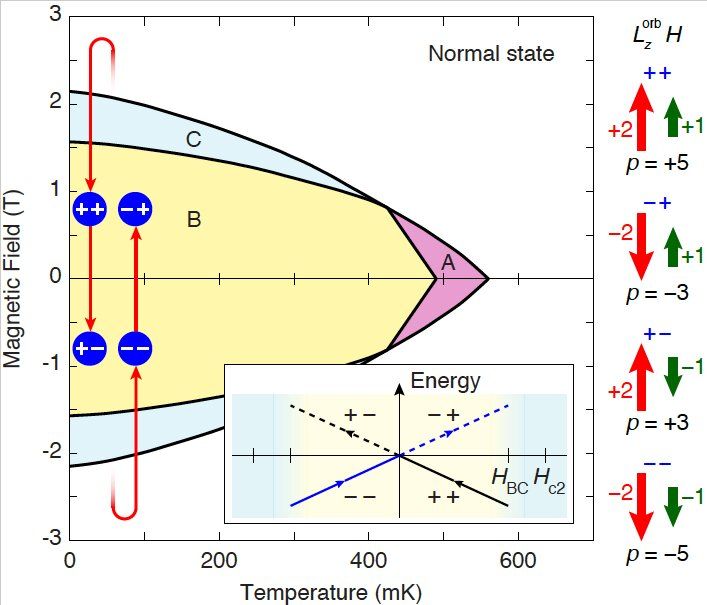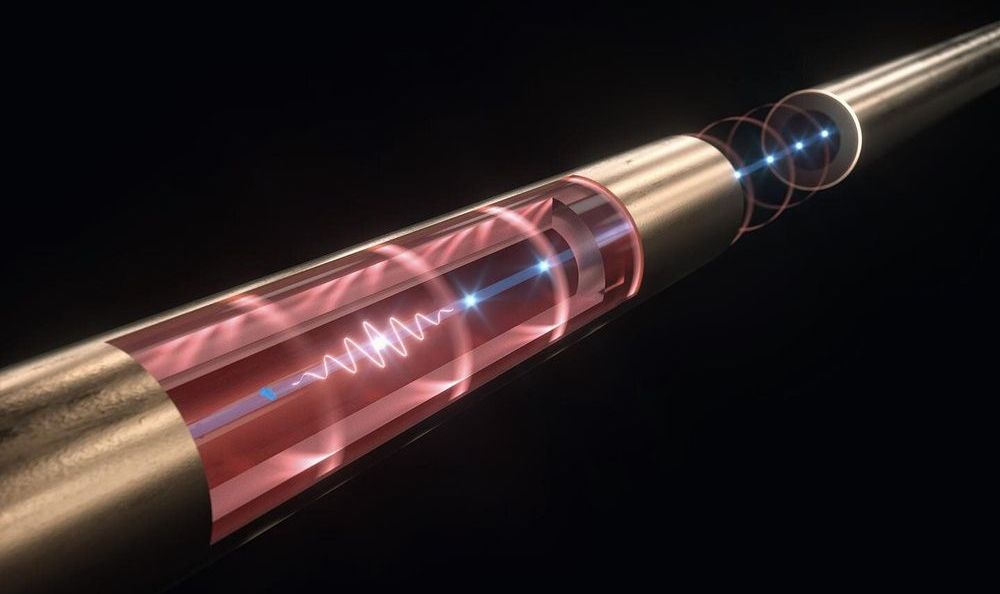Our goal is to evaluate, test and share the validated & most promising Maker projects to create an alternative system to supply medical materials.



O,.,o.
A team of scientists at North Carolina State University have developed a technique that could allow bricks and other common building materials to act as “cameras” that can reveal the location and distribution of radioactive materials that were once in their vicinity. Using optically stimulated luminescence, the team was able to retrieve a historical snapshot thanks to how radioactive elements like weapons-grade plutonium affected certain minerals in the materials.
On Christmas Day, 1972, the BBC aired a ghost story called The Stone Tape, which postulated that ghosts were the result of the stones in a room acting as a recording medium of past events – a stone tape, as it were. It was regarded as not only one of the best horror stories produced for television, it also popularized the hypothesis in paranormal circles known as residual hauntings or the Stone Tape theory.
Now, a North Carolina team has come up with a real-life version of the stone tape, only this time what it records is radiation, not phantoms. The idea is that building materials can act like a 3D camera that picks up residual gamma radiation signatures. This is because some minerals, such as quartz or feldspar, react to gamma rays by trapping electrons in their crystalline matrix. When stimulated, these electrons shift from their prison, releasing light that can be measured on a photomultiplier, allowing scientists to build up a picture of any strong radioactive source that might have been in the area.

When asked, “What kind of superpower would you like to have,” most of us say “invisibility.” Even Derek Jeter. Invisibility, like the ability to fly, is the stuff of childhood dreams. And for decades, cloaking devices have been a favorite plot device of science-fiction and fantasy classics like “Star Trek,” “Harry Potter” and “Doctor Who.”
Today, the F-35 strike fighter jet makes this fantasy a reality, as it navigates airspace with the most advanced powers of hide and seek. Its multiple stealth devices – radar-absorbing materials and internal infrared sensors – comprise the ultimate invisibility cloak. In the F-35 and elsewhere, stealth and cloaking technologies have become more comprehensive and durable, with applications for military and other industries. This is what happens when science meets imagination.
“With improvements, tanks or planes can be cloaked from human observation, car trunks can be made see-through, blind spots can be cloaked to be seen easily or cloaking can even be used as art or included for architectural effects,” said Joseph Choi, a researcher with the University of Rochester’s Institute of Optics.

The most common materials in the world, including plastic, steel, glass or wood have distinct molecular and chemical properties that give them intrinsic qualities, such as strength, flexibility or transparency. But an entirely different class of materials, called metamaterials, are coming onto the scene.
Artificially engineered, these materials have unique geometries and physical structures that can manipulate any mechanical or electromagnetic wave that passes through them. Metamaterials can perform a host of futuristic tricks; they can absorb sound waves to produce silence, bend light to create an invisibility cloak and dampen seismic waves to safeguard a building against an earthquake.
Metamaterial applications are numerous, but here are five of the coolest.

O,.,o woah.
Chiral superconductors are unconventional superconducting materials with distinctive topological properties, in which time-reversal symmetry is broken. Two of the first materials to be identified as chiral superconductors are UPt3 and Sr2RuO4. So far, experimental evidence for broken time-reversal symmetry in both these materials was based primarily on surface measurements collected at a magnetic field equal to zero.
Researchers at the University of Notre Dame and Northwestern University, however, recently set out to gather new evidence for the chiral superconductivity of the material UPt3, moving beyond surface measurements at conditions with a zero magnetic field. Their paper, published in Nature Physics, contains the results of truly bulk measurements of UPt3 with an applied magnetic field, which provide direct evidence of broken time-reversal symmetry in the material.
“The measurements we collected are the conclusion of a decade long-term collaboration between William Halperin at Northwestern University and myself, driven by previous (William Gannon) and current (Keenan Avers) graduate students,” Morten Eskildsen, one of the researchers who carried out the study, told Nature Physics. “They are especially timely given that recent thermal conductivity and 17O Knight shift measurements call into question the earlier determination of odd parity pairing in Sr2RuO4.”
These materials have self-healing capabilities, just like Wolverine’s skin.

:oooooooo.
Recent findings of new Higgs modes in unconventional superconductors require a classification and characterization of the modes allowed by nontrivial gap symmetry. Here we develop a theory for a tailored nonequilibrium quantum quench to excite all possible oscillation symmetries of a superconducting condensate. We show that both a finite momentum transfer and quench symmetry allow for an identification of the resulting Higgs oscillations. These serve as a fingerprint for the ground state gap symmetry. We provide a classification scheme of these oscillations and the quench symmetry based on group theory for the underlying lattice point group. For characterization, analytic calculations as well as full scale numeric simulations of the transient optical response resulting from an excitation by a realistic laser pulse are performed. Our classification of Higgs oscillations allows us to distinguish between different symmetries of the superconducting condensate.

A team of DESY scientists has built a miniature double particle accelerator that can recycle some of the laser energy fed into the system to boost the energy of the accelerated electrons a second time. The device uses narrowband terahertz radiation which lies between infrared and radio frequencies in the electromagnetic spectrum, and a single accelerating tube is just 1.5 centimetres long and 0.79 millimetres in diameter. Dongfang Zhang and his colleagues from the Center for Free-Electron laser Science (CFEL) at DESY present their experimental accelerator in the journal Physical Review X.
The miniature size of the device is possible due to the short wavelength of terahertz radiation. “Terahertz-based accelerators have emerged as promising candidates for next-generation compact electron sources,” explains Franz Kärtner, Lead Scientist at DESY and head of the CFEL group that built the device. Scientists have successfully experimented with terahertz accelerators before, which could enable applications where large particle accelerators are just not feasible or necessary. “However, the technique is still in an early stage, and the performance of experimental terahertz accelerators has been limited by the relatively short section of interaction between the terahertz pulse and the electrons,” says Kärtner.
For the new device, the team used a longer pulse comprising many cycles of terahertz waves. This multicycle pulse significantly extends the interaction section with the particles. “We feed the multicycle terahertz pulse into a waveguide that is lined with a dielectric material”, says Zhang. Within the waveguide, the pulse’s speed is reduced. A bunch of electrons is shot into the central part of the waveguide just in time to travel along with the pulse. “This scheme increases the interaction region between the terahertz pulse and the electron bunch to the centimetre range—compared to a few millimetres in earlier experiments,” reports Zhang.

Recently, we’ve encountered the following claim: “#Copper has antimicrobial effect that can help destroy #viruses (including #coronavirus) and #bacteria.” — If you think the message above is fishy, you’re not alone! At first, we’re suspicious as well. However, after a little digging, we found that there may be some truth in it. The following are some references supporting the claim: [Relevant Articles] https://bit.ly/2J2OEbt (Wikipedia: #Antimicrobial properties of #copper) https://bit.ly/3bg73NY (Fast Company) https://bit.ly/3didUs2 (Vice) [Scientific Papers — PDF] https://bit.ly/396UDqu https://bit.ly/3a43Xwt https://bit.ly/2wh8flF The biocidal effect of metals such as #copper is called “oligodynamic effect” (or to be more precise, such biocidal effect is carried out by the ions of these metals), and it can happen even when the ions are in low concentration. The effect may involve multiple mechanisms. For instance, #copper can inappropriately bind to some #proteins and accordingly cause these proteins to lose their functions, or #copper can decrease the integrity of the microbes’ membrane and cause important substances such as #potassium and #glutamate to leak out from the cell, etc. Note that this certainly does NOT mean that simply wearing ornaments made of copper can stop #COVID19 and other #pathogens from infecting your body, but it does help you to choose the material of the things you use (e.g., you may want to use copper fork or spoon while dining more often recently)!
Civilizations have recognized copper’s antimicrobial properties for centuries. It’s time to bring the material back.
[Source Images: ekimckim/Blendswap (toilet), blenderjunky/Blendswap (bathroom)].
